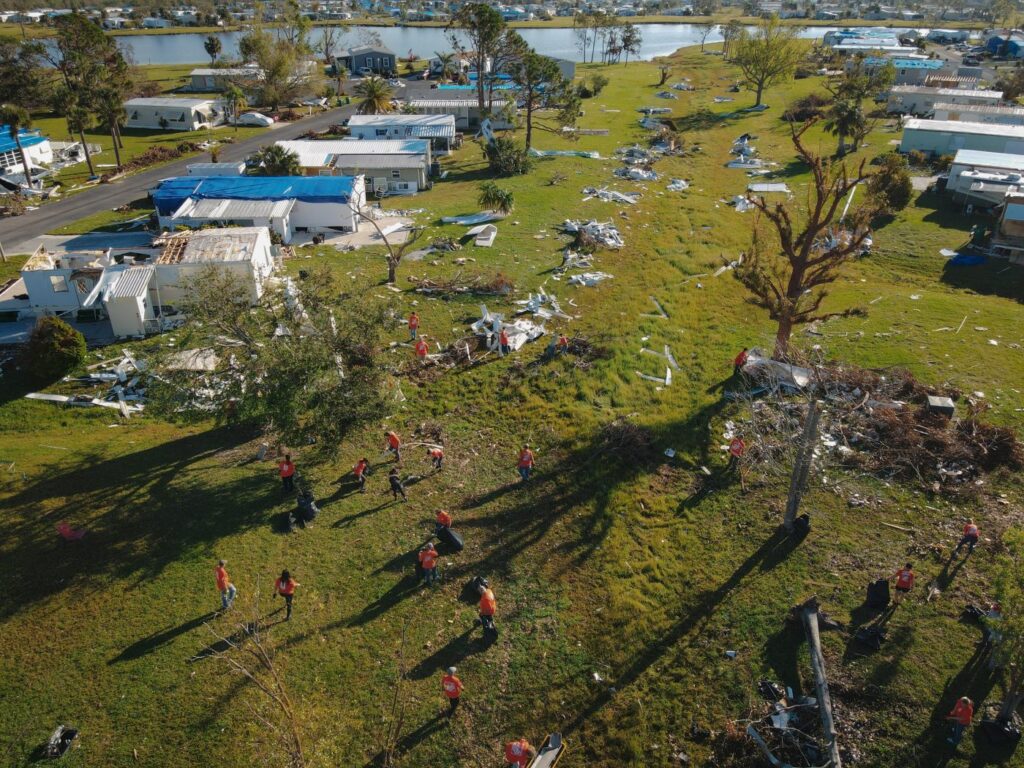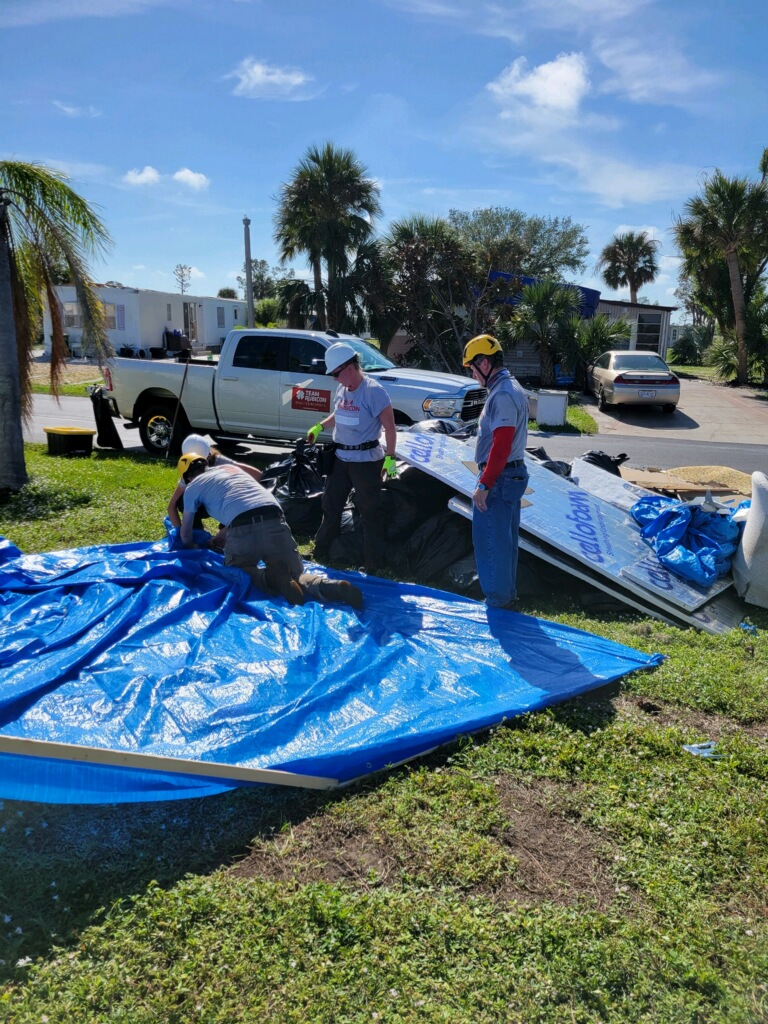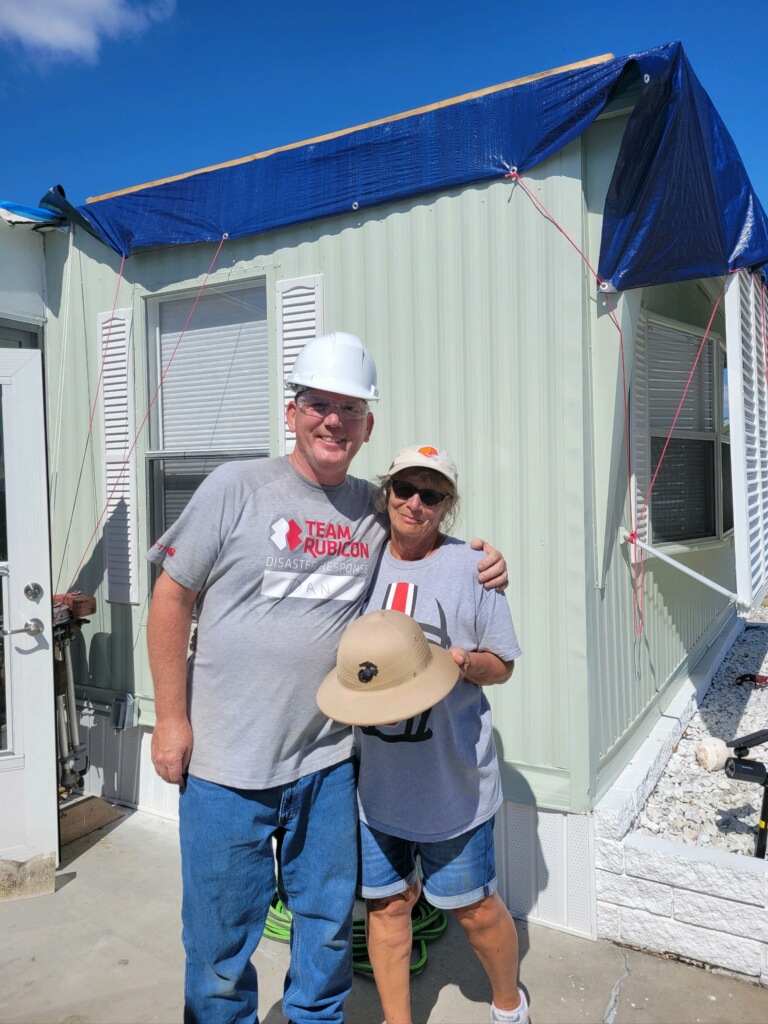As I sat in my kitchen in Ohio, watching the news of the approaching tropical storm they would soon name Ian, the intensity of the memories of Hurricane Charley flooded my mind. In August of 2004, Hurricane Charley had spun through the Gulf of Mexico, crossed the barrier islands of Cayo Costa and Gasparilla, then made landfall in Charlotte County as a Category 4 Hurricane. It leveled much of Punta Gorda and caused $15 billion in damages in Florida.
The storm I was watching now also had the potential of coming up into the Gulf and could leave its calling card anywhere from Miami to Tampa. It was increasing in strength, and the likelihood it would hit a Category 4 to 5 was becoming a reality. I prayed the Port Charlotte area, where we had a home, would be spared. Not that I wished other areas to suffer, I just wanted us all to breathe a sigh of relief. And, I hoped Hurricane Ian wouldn’t wreak havoc and do the damage I knew it could—no matter whose door it came knocking on or where it left its calling card.
I had called southwest Florida home since my husband, Richard, and I purchased our retirement home in the Village of Holiday Lake, in Port Charlotte, in 2009. We were both still employed then, he as a Union Laborer; me as a Juvenile Court Probation Officer. We hoped to get an early start towards complete retirement by finding a place and fixing it up.
We had come to VHL, as it is called, on a 10-day vacation with cousins Eddie and Sheila in 2007. We fell in love with the area. It was still rural in its approach to life, yet held the appeal and draw of beach life, restaurants, boating, and fishing. It sounded like a perfect way to spend the less hectic years of our lives.

Watching Ian head for Charlotte Harbor evoked memories of Hurricane Charley for many. VHL is located on the left, or west, side of Charlotte Harbor; Punta Gorda is on the right. As Hurricane Charley approached the Harbor, it had veered away from VHL and made landfall in Punta Gorda instead.
I remember watching the news of that approaching storm way back then. For some reason, it seemed I had an unknown connection to a place I had never been. I was absorbed by what the news stations were broadcasting. It never occurred to me in 2004 that Richard and I would purchase a home there five years later. In the very place that pierced my heart as I watched Charley unfold on the TV from far away Ohio. In fact, the first time we came to VHL, about 2 miles before we turned onto Marathon Boulevard and into the village I described to Richard a sign that would be at the entrance. I had never been here before, yet the sign was exactly as I had described it to him.
After we moved to the area as snowbirds, I would always say to family and friends, “If we are ever in Florida when a hurricane starts forming in the Gulf, I’ll be ready to vacate the area within four hours!”
Well, we weren’t in Florida when Hurricane Ian started forming and growing. I was home in Stow, Ohio, alone. Richard had passed away nine months earlier, on December 31st, 2021. A Vietnam veteran who served in the Marine Corps, he passed away from cancer that developed as a result of Agent Orange exposure.
Days later, the weather Gods sent us a warning of what we would face in the year to come: The day after Richard’s funeral in January, a tornado touched down in several areas along Gasparilla Road. VHL and many in the community suffered damage; our friends Bill and Bonnie Beal the loss of their home. It was the beginning of a year that would change so many lives, in so many ways, with such a profound impact.
By the end of September, Hurricane Ian was continuing its journey toward southwest Florida and our home. Friends at VHL and those still in Indiana, Missouri, Massachusetts, Maine, and New Hampshire were keeping in constant touch through phone calls and texts; all holding on for the best outcome.
Our son Michael offered me words of encouragement by saying, “Mom, VHL has survived tornadoes, tropical storms, and hurricanes as big as Charley and the place is still standing! They are sturdy and pretty well made to have lasted for the last 40 years!” I so hoped that would hold true.
Unfortunately, VHL just hadn’t met the likes of Hurricane Ian. Just after 3 p.m. on September 28, Ian came ashore near Cayo Costa—roughly 10 miles southwest of VHL—with maximum sustained winds of 150 mph. It tied the record for the fifth-strongest hurricane on record to strike the U.S. To the south, in Fort Myers, it brought 12- to 18-foot storm surges. Here in Charlotte County, Hurricane Ian shredded roofs, tore up trees, and cost 23 people their lives—directly or indirectly.
As September 28th turned into the 29th the cold reality that we were facing severe damage began creeping in. As those who lived there full-time found their way back into VHL, they shared what they saw with us up north. The reports were heart-wrenching, and the photos and drone videos even worse.
I flew down to Florida on October 2nd. I needed to get my eyes on what I was up against. Friends John and Nancy DeMoss were driving down from Indiana and would pick me up at the airport.
Even though I had spoken to Nancy the night before, I was not prepared for the look in her eyes and the stress on her face when I saw her. She had been to VHL and told me, “it’s not pretty.” It was the sad tone in her voice that caught my ear and hurt my heart.
The destruction we saw as we drove away from Punta Gorda Airport became more evident as we traveled up Tamiami Trail to McCall and Gasparilla Roads, onto Marathon Boulevard, and into VHL.
After making landfall approximately 10 miles from our village, Hurricane Ian had decided to stay and whip like an old-fashioned butter churn until it twisted all we loved and worked hard for into a mangled mess. Metal, aluminum, glass, plastic, trees, yard waste, and personal belongings were blown from one end of VHL to the other and beyond. VHL covers more than 300 acres.

Nothing—not photos, not news accounts, not personal descriptions—had prepared me for what I found at VHL. It was a different world than one I had ever known. The debris was widespread and in huge amounts, almost touching the treetops in some places. It was spread across the canal into the mangroves. It was in the lake. It was everywhere. Not one place had been spared by the winds of Hurricane Ian.
The Village of Holiday Lake was almost unrecognizable.
The scope of the devastation was even deeper than the debris littering our community. Yes, homes were destroyed, many obliterated, but it was the loss of the community that was the real gut punch. It was the look in the eyes of friends and neighbors—shell-shocked and stunned to their core—that made me weep. It was the sad acceptance of those who were leaving homes and a community that had become uninhabitable—perhaps never to see it again—that took the grief of this tragedy to a deeper level. I’ve never experienced a catastrophic event such as this firsthand.
I knew almost immediately its impact would be deeply profound and long-lasting in its heartache. The startling recognition of the losses would come at us like the waves that hit the shores not far from here, one upon another. Then, a brief respite from being knocked down, only to find your footing swept out from under you again when the VHL grapevine brought news of someone who suffered even more loss than you.
I likened it to being in a bumper car, going forward, hitting something, being spun around, bouncing off something else, and off you’d be in a different direction. The words most often spoken by everyone in the first few weeks here were, “I don’t know,” and “I’m in a fog,” or “I’m at a loss for words.” No one knew what they were doing, how they were doing it, or when they were doing it. They just moved. I think that was to keep from collapsing.
And then Team Rubicon came into our village, and those here in VHL rallied to help one another.
I know I cried daily the first two weeks I was here. The tears and emotions overtook simple conversations; words of sincere thanks and appreciation could barely be spoken without breaking into tears, all because the sense of loss was so deeply felt by everyone.

The men and women of Team Rubicon seemed angels sent at such a desperately needed time. The magnitude of their support for all of us and their willingness to give up their comforts to assist all of us was overwhelming. They worked tirelessly in the humidity and heat. From Dan and his crew, who tarped my home, to Marke and his crew, who helped with debris cleanup, and the many numerous Team Rubicon crews who worked throughout VHL, you are our heroes.
One day I was driving past a Team Rubicon group headed up by Marke and our volunteers Neil, Ric, and Kevin from VHL. Something prompted me to stop and ask, “Has anyone told you they love you today? I love you today,” I said. I felt they needed to know how special they were, and I hoped to brighten their day as much as their presence was brightening all of ours. It became something I did whenever I saw them.
The days in VHL are improving; help still arrives in various ways. The future looked less bleak as we headed into the days approaching Christmas. Hammering and sawing sounds of rebuilding still reverberate around VHL. They are the melodies that whisper a song to us that sings, “it will get better, hang on!”
I think blessings come out of dire situations, the opportunity to share my story being one. When faced with adversity such as this in life, it’s dear family and friends—both the old and new ones you were gifted to meet—that lift you up. And the pure goodness of people will see you through. Because it seems the more of yourself you give away to others in times like this, the faster your heart and your resolve will recover.



